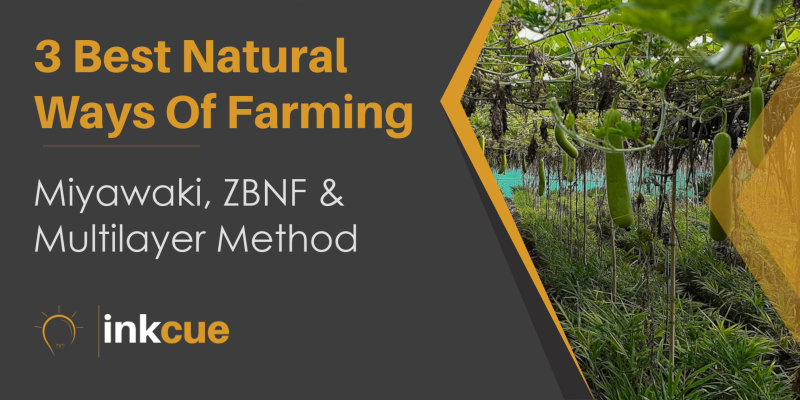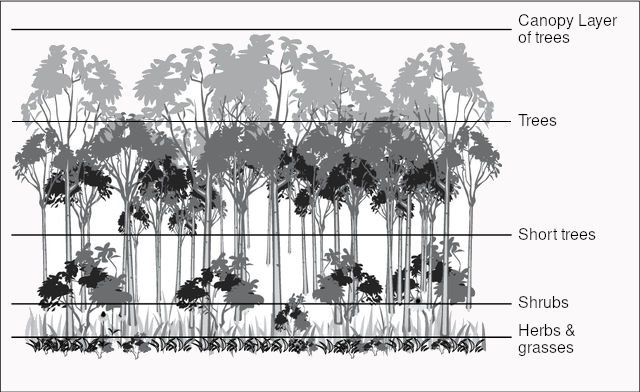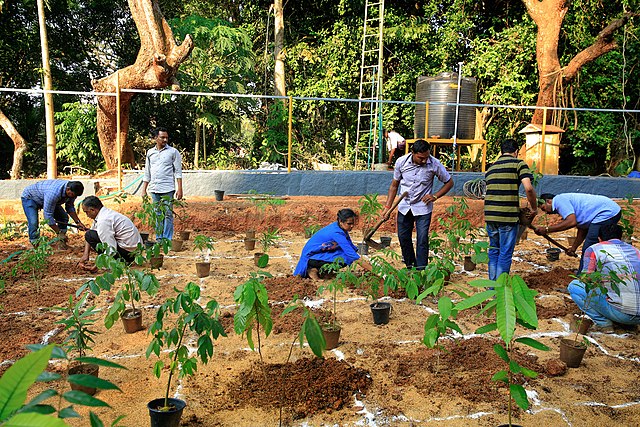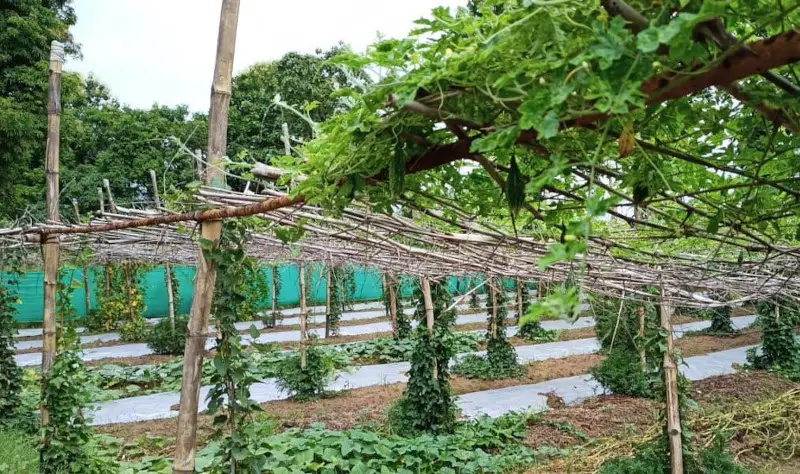
Our agriculture today is heavily dependent on fertilizers, hybrid seeds, pesticides, etc. which harms the environment and health, and are a disaster for biodiversity. The impact of fertilizers can be seen in the Indian State of Punjab where the soil is losing its fertility and needs more fertilizer to grow the same amount of crop year after year. Another problem with using chemicals in farming is that they are expensive and increases the input cost of growing crops making agriculture a loss-making business.
Witnessing this, many people want some alternative method for farming and to help them we will discuss a few sustainable farming models in this article.
Miyawaki Farming Method
Miyawaki method builds upon the strength in natural systems that have flourished in the area for hundreds of years and is a method widely used for the restoration of native forests and is particularly useful in plantation or community farms. Proposed by Dr. Akira Miyawaki, the method creates natural conditions for a dense forest having rich native biodiversity to grow.

Following are the general steps to be followed while planting a Miyawaki forest/plantation. They may require changes and improvisation according to resources available on the spot.
-
Collect information about native plants
Firstly, one must collect information about native plants of the area (which existed before human interventions). The information will include height of the plants, its root system, compatibility with other species, ideal growing conditions, etc.
The information can be found from various sources such as government records, old temples, libraries, literary sources, talking to elder people, sacred groves, gardens, old houses, historic buildings, etc.
-
Collect seeds of native species
Collect seeds of as many native plant species as you can.
-
Sorting of seeds

Sort the seeds according to the type (flowering plants, fruit plants, herbs, medicinal plants, etc) and plant height (tall trees, short trees, shrubs, herbs).
-
Grow saplings
Grow saplings according to the type of forest/ plantation you want to create. If you want a fruit forest then grow more number of fruiting tree species along with an adequate number of other species (having at least 50 species in the mix is recommended).
-
Prepare the soil
Put organic fertilizers, water retaining material (coco-peat, dry sugarcane stalk), perforator (husk, nutshell) and mix them with soil thoroughly up to the depth of 1m and then put a good amount of mulch.
-
Plan and prepare the area
Minimum area recommended for continuous plantation is 300 sq. feet with proper sunlight, ensuring this one can plan approach roads, watering/harvesting system etc.
-
Clearing weeds
Before planting clear out weeds and alien species.
-
Start Planting

Plant the trees in multilayered fashion so that no 2 trees of same species be together and group the trees as shown in step 3. The plantation should be dense and random with a gap of 60cm between the saplings.
-
Care for the plantation
The mini forest should be looked after for next 2-3 years – removing weeds, watering, mulching, checking for infection and recording growth.
-
Enjoy
The 2-3 year old forest will attract biodiversity, give out organic, healthy and nutritious produce, clean and recharge groundwater, improve the quality of soil surrounding it and can become a place for meditation.
Zero Budget Natural Farming (ZBNF) Method
As the name suggest it’s a farming method with almost zero input cost. This method also believes in natural growth of plants without use of any chemical input and natural inputs are provided in the form of beneficial microorganism culture, natural fertilizers etc.
Put forward by Subash Palekar, the method has four important guidelines
Bijamrita
Seed Treatment using cow dung and urine of local origin, to protect young saplings from fungus and soil-borne/seed-borne diseases.
Jiwamrita
It’s a fermented microbial culture which provides nutrients and acts as a catalytic agent to promotes the activity of microorganisms.
Mulching
Provides favorable microclimate to organisms in the soil and also helps in reducing soil erosion.
Waaphasa
It’s the condition where there are both air and water molecules present in the soil.
Other important principles include intercropping, contours and bunds, local species of earthworms. The method is said to give almost the same output as chemical farming.
For further reading visit Food and Agriculture Organization of the United Nations
Multilayer Farming Method
This method works on the principle of growing many complimentary crops together (non-competing) for nutritional and crop security. Generally, the plants used have different lifecycles so that a farmer can maintain his income all year round along with some plants that act as traps for pests.

The method has four important steps
Land Preparation
Prepare the land according to the guidelines as provided in zero budget natural farming.
Setting up boundary
The method is not normally practiced in open rather inside a semi enclosure (natural greenhouse), which protects the plants from low flying insects, weeds, heat/cold waves and maintain an optimum condition (forest like) for plants to grow.
The boundary is made from bamboo and is at least 6ft in height (wrapped in cloth/saree) with each bamboo pole being 6-5ft apart tied together with rope/wire (for creepers to climb), the whole structure is covered by mesh of ropes with dried grass placed on it (to allow filtered sunlight).
Planting
Before starting to plant we need to select the right crop combination, one should follow following principles to select the crops.
- The root and stem length of the crops should be different.
- They should require different intensity of sunlight.
- Should complement each other.
- Should have different life cycles.
| Colocasia – Amaranths – lady’s finger |
| Yam – Brinjal – Ridge gourd – Papaya |
| Ginger – Spinach – Banana |
| Turmeric – Amaranths – Bottle gourd – Coconut |
| Ginger – Okra – Bottle gourd |
| Onion – Potato – Sugarcane |
| Sweet potato – Coriander – Coffee |
| Garlic – Spinach – Okra – Papaya |
| Potato – Bitter gourd – Papaya – Coconut |
| Yam – Chili – Cucumber – Papaya |
Caring
Bio fertilizers (Jiwamrita, ghan Jiwamrita) and bio pesticides (CVR soil technique, Dashparni Ark, Neemastra, Brahmastra) should be applied regularly with an interval of at most 15 days and mulching should be done regularly.
| Week 1 | Natural Pesticides | CVR, Dashparni Ark |
| Week 2 | Jiwamrita | 10% diluted sol. |
| Week 3 | Natural Pesticides | CVR, Dashparni Ark |
| Week 4 | Jiwamrita & Butter Milk | 3:1 ratio |
For further reading visit The Better India
Conclusion
All the above mentioned methods of farming are natural and help in minimizing input cost of farming. They require almost no extra external resources and use only 10-20% of the water which is normally used in chemical farming. The methods can be mixed, matched and modified according to the need and space available.
If you have benefited from any of these methods or have any new method please share your story below.
